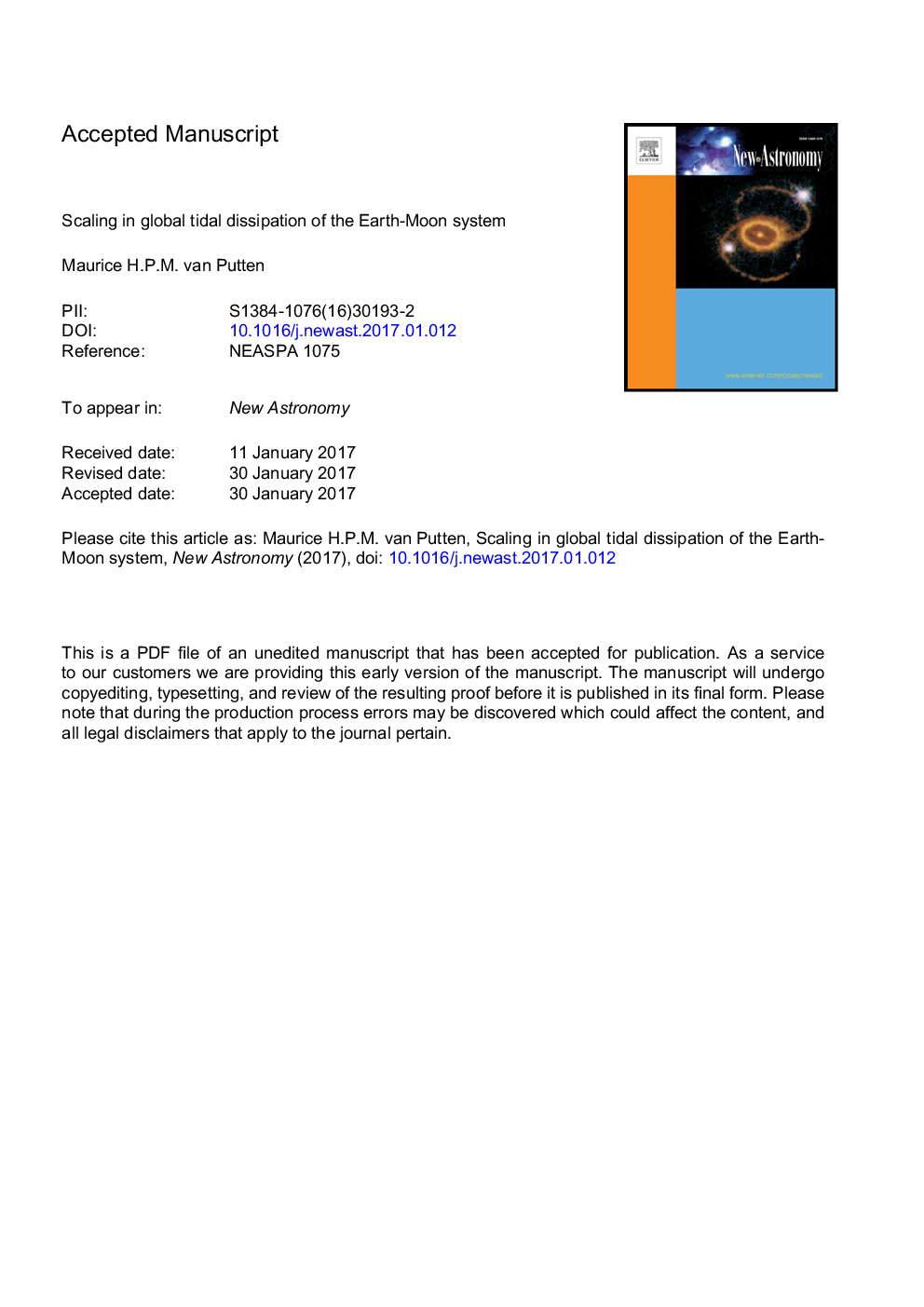| Article ID | Journal | Published Year | Pages | File Type |
|---|---|---|---|---|
| 5487779 | New Astronomy | 2017 | 19 Pages |
Abstract
The Moon migrated to cm over a characteristic time r/v=10 Gyr by tidal interaction with Earth's oceans at a present velocity of v=3.8 cm yrâ1. We model global dissipation to cover the entire history over the past 4.52 Gyr. We use scaling and numerical integration to model the off-resonance tidal interactions at relatively short tidal periods in the past to a near-resonance state at present. The global properties of the complex spatio-temporal dynamics and dissipation in broad spectrum ocean waves is modeled by damping ϵ=hF/(2Q0), where h is the tidal wave amplitude, F is the tidal frequency, and Q0 is the Q-factor at the present time. It satisfies Q0 â 14 for consistency of migration time and age of the Moon consistent with observations for a near-resonance state today. Numerical results reveal the need for scaling with amplitude. It shows a startlingly fast eviction of the Moon from an unstable near-synchronous orbit close to the Roche limit, probably in a protolunar disk. Rapid spin down of Earth from an initial â¼ 30% of break-up by the Moon favored early formation of a clement global climate. Our theory suggests moons may be similarly advantageous to potentially habitable exoplanets.
Related Topics
Physical Sciences and Engineering
Physics and Astronomy
Astronomy and Astrophysics
Authors
Maurice H.P.M. van Putten,
